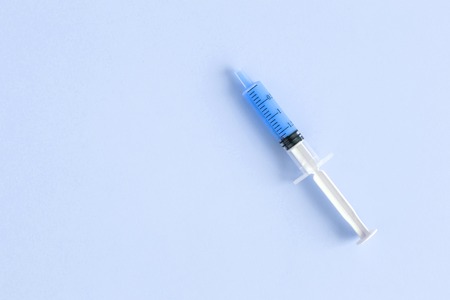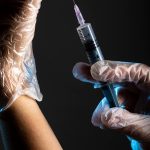1. Introduction to PRP Therapy for Hair Regrowth
Hair loss is a common concern affecting millions of people, leading many to seek effective solutions. One treatment that has gained significant attention in recent years is Platelet-Rich Plasma (PRP) therapy. This innovative procedure harnesses the bodys natural healing properties to stimulate hair follicles and promote hair regrowth.
What is PRP Therapy?
PRP therapy is a non-surgical treatment that uses a patient’s own blood to extract platelets rich in growth factors. These growth factors play a crucial role in tissue repair and regeneration, making PRP an effective option for stimulating dormant hair follicles and encouraging new hair growth.
Why is PRP Therapy Gaining Popularity?
With advancements in medical aesthetics, PRP therapy has become an increasingly popular choice for those experiencing hair thinning or early-stage hair loss. Here’s why:
| Benefits of PRP Therapy | Description |
|---|---|
| Natural Treatment | Uses the patients own blood, reducing the risk of allergic reactions or side effects. |
| Non-Surgical Procedure | A minimally invasive treatment with no downtime, allowing patients to resume daily activities quickly. |
| Stimulates Hair Follicles | The growth factors in PRP help revitalize weak or dormant hair follicles, promoting thicker and healthier hair growth. |
| Safe and Effective | Naturally enhances the body’s ability to regenerate hair without synthetic chemicals or medications. |
Who Can Benefit from PRP Therapy?
This treatment is ideal for individuals experiencing early signs of hair thinning or androgenetic alopecia (pattern baldness). It is particularly beneficial for those looking for a natural approach to restoring hair density without undergoing surgical procedures like hair transplants.
2. How PRP Stimulates Hair Follicles
Platelet-Rich Plasma (PRP) therapy is a natural and effective way to stimulate hair growth by leveraging the bodys own healing properties. PRP contains concentrated growth factors that play a key role in activating dormant hair follicles and promoting new hair production.
The Role of Growth Factors in Hair Regeneration
Growth factors are proteins found in platelets that help repair tissues, reduce inflammation, and encourage cell regeneration. When PRP is injected into the scalp, these growth factors create an optimal environment for hair follicle activation and strengthening.
Key Growth Factors in PRP Therapy
| Growth Factor | Function |
|---|---|
| Platelet-Derived Growth Factor (PDGF) | Stimulates cell growth and blood vessel formation, enhancing follicle nourishment. |
| Epidermal Growth Factor (EGF) | Promotes cell regeneration and strengthens hair follicles. |
| Vascular Endothelial Growth Factor (VEGF) | Increases blood circulation to the scalp, supporting hair follicle health. |
| Transforming Growth Factor-Beta (TGF-β) | Aids in tissue repair and regulates the hair growth cycle. |
The Mechanism Behind PRPs Effectiveness
The process of PRP therapy involves drawing a small amount of the patient’s blood, processing it to concentrate the platelets, and then injecting the PRP directly into the scalp. Once injected, the growth factors begin working to:
- Awake Dormant Follicles: Stimulating inactive hair follicles to enter the growth phase.
- Improve Blood Flow: Enhancing circulation around hair follicles for better oxygen and nutrient delivery.
- Nourish Hair Roots: Strengthening existing hair shafts and reducing thinning.
- PROMOTE NEW HAIR GROWTH:: Encouraging the production of thicker, healthier strands over time.
The Hair Growth Cycle and PRPs Impact
The natural hair growth cycle consists of three phases: Anagen (growth), Catagen (transition), and Telogen (resting). PRP therapy primarily influences the Anagen phase by reactivating weak or dormant follicles, leading to visible improvements in hair density and quality.
![]()
3. The Role of Growth Factors in Hair Regeneration
Platelet-Rich Plasma (PRP) therapy is a game-changer in hair restoration, primarily due to the powerful growth factors it delivers to the scalp. These growth factors play a crucial role in stimulating hair follicles, improving blood circulation, and extending the hair growth phase.
Key Growth Factors in PRP for Hair Restoration
PRP contains a variety of growth factors that contribute to hair regeneration. Below are some of the most important ones:
| Growth Factor | Function in Hair Regeneration |
|---|---|
| Platelet-Derived Growth Factor (PDGF) | Promotes cell growth and stimulates follicle regeneration. |
| Vascular Endothelial Growth Factor (VEGF) | Enhances blood supply to hair follicles, ensuring proper nourishment. |
| Epidermal Growth Factor (EGF) | Supports cell repair and accelerates tissue healing. |
| Fibroblast Growth Factor (FGF) | Encourages new cell formation and strengthens hair structure. |
| Transforming Growth Factor-Beta (TGF-β) | Regulates follicle development and reduces inflammation. |
How Growth Factors Work Together
The synergy between these growth factors is what makes PRP therapy effective. PDGF and VEGF improve circulation around the follicles, ensuring they receive essential nutrients. EGF and FGF help with cellular repair, while TGF-β ensures a balanced environment for healthy hair growth.
The Impact on Hair Follicles
By delivering these growth factors directly to the scalp, PRP therapy helps awaken dormant hair follicles and prolongs the anagen (growth) phase of the hair cycle. This results in thicker, healthier hair over time.
Why Blood Flow Matters
Adequate blood circulation is vital for healthy hair follicles. VEGF plays a key role by promoting new blood vessel formation, ensuring that oxygen and nutrients reach the follicles efficiently. This enhanced blood flow supports stronger and more resilient hair strands.
The Science Behind PRP’s Effectiveness
Studies have shown that PRP injections can significantly increase hair density and thickness by activating stem cells in the follicular units. The presence of concentrated growth factors in PRP enhances follicle survival rates and improves overall scalp health.
Understanding how these essential growth factors work together gives insight into why PRP therapy is becoming an increasingly popular solution for those struggling with hair loss.
4. The PRP Treatment Process: What to Expect
PRP (Platelet-Rich Plasma) therapy for hair restoration is a straightforward procedure that involves drawing your blood, processing it to extract growth factors, and injecting it into the scalp to stimulate hair follicles. Below is a step-by-step breakdown of what you can expect during a PRP treatment session.
Step 1: Blood Collection
The process begins with a simple blood draw, usually from your arm. This step is similar to getting routine blood work done at a doctors office.
Step 2: Centrifugation – Extracting the PRP
Once collected, the blood sample is placed in a centrifuge—a machine that spins rapidly to separate the platelet-rich plasma from other blood components like red and white blood cells.
Step 3: Preparing the PRP Solution
The separated PRP, rich in growth factors, is then prepared for injection. Some clinics may enhance the PRP with additional nutrients or activators to maximize its effectiveness.
Step 4: Scalp Numbing (Optional)
To minimize discomfort during the injections, a numbing cream or local anesthetic may be applied to the scalp. While not always necessary, this step helps ensure a more comfortable experience.
Step 5: PRP Injection into the Scalp
The prepared PRP solution is injected into targeted areas of the scalp where hair thinning or loss has occurred. The injections are performed using fine needles to deliver growth factors directly into the hair follicles.
Step 6: Post-Treatment Care and Recovery
After the procedure, patients can typically resume normal activities with minimal downtime. Some mild redness or tenderness in the treated areas is common but usually subsides within a day or two.
PRP Therapy Process Overview
| Step | Description |
|---|---|
| Blood Collection | A small amount of blood is drawn from the patient. |
| Centrifugation | The blood is spun to separate platelet-rich plasma. |
| PRP Preparation | The extracted PRP is processed for injection. |
| Numbing (Optional) | A numbing agent may be applied to reduce discomfort. |
| Scalp Injection | The PRP solution is injected into specific areas of hair loss. |
| Recovery | Mild redness or soreness may occur, but normal activities can be resumed quickly. |
5. Effectiveness and Results of PRP for Hair Loss
PRP therapy has gained significant attention as a non-surgical solution for hair loss, but how effective is it? Lets explore clinical studies, patient experiences, and the factors that influence success.
Clinical Studies on PRP for Hair Growth
Several studies have examined the effectiveness of PRP therapy in stimulating hair follicles and promoting regrowth. Research indicates that PRP can improve hair thickness, density, and overall scalp health.
| Study | Participants | Results |
|---|---|---|
| 2019 Study (Dermatologic Surgery Journal) | 40 patients with androgenetic alopecia | Significant increase in hair count and thickness after three sessions |
| 2021 Meta-Analysis (International Journal of Trichology) | Multiple studies reviewed | PRP was found to be effective in 70% of cases, especially in early-stage hair loss |
| 2023 Clinical Trial (American Journal of Aesthetic Medicine) | 100 patients over six months | Improved hair density with minimal side effects |
Patient Experiences and Success Stories
The results of PRP therapy can vary from person to person. Many patients report noticeable improvements in hair thickness and reduced shedding within a few months of treatment. However, multiple sessions are often required for optimal results.
Anecdotal Feedback from Patients
- “I started seeing baby hairs after my second session!” – Mark, 35
- “My hairline looks fuller, and I feel more confident.” – Sarah, 42
- “It took about four treatments before I really noticed the difference.” – Jake, 50
Factors Affecting PRP Therapy Success
The effectiveness of PRP therapy depends on several key factors:
Treatment Frequency:
A single session is rarely enough. Most providers recommend an initial series of three to four treatments spaced about a month apart, followed by maintenance sessions every six to twelve months.
The Severity of Hair Loss:
Younger patients or those in the early stages of hair thinning tend to respond better than individuals with advanced baldness.
Lifestyle and Health Factors:
Nutritional deficiencies, stress levels, smoking, and underlying medical conditions can impact the success of PRP therapy.
The Quality of Platelet Concentration:
The effectiveness of PRP depends on the concentration of growth factors in the plasma. Higher platelet concentrations tend to produce better results.
The Bottom Line: Is PRP Effective?
The majority of studies and patient experiences suggest that PRP therapy is an effective treatment for hair loss—especially when combined with other supportive therapies like topical treatments or lifestyle changes. However, individual results may vary based on personal factors.


